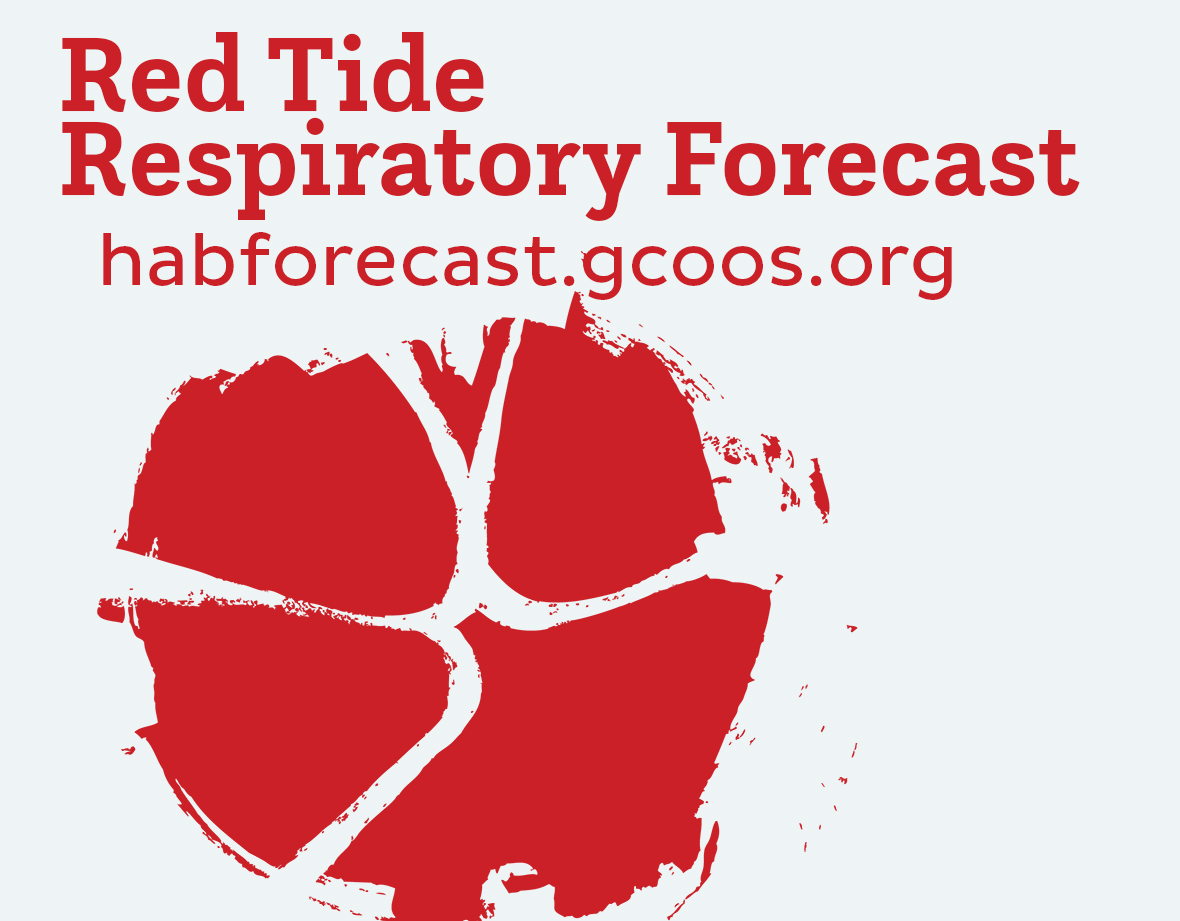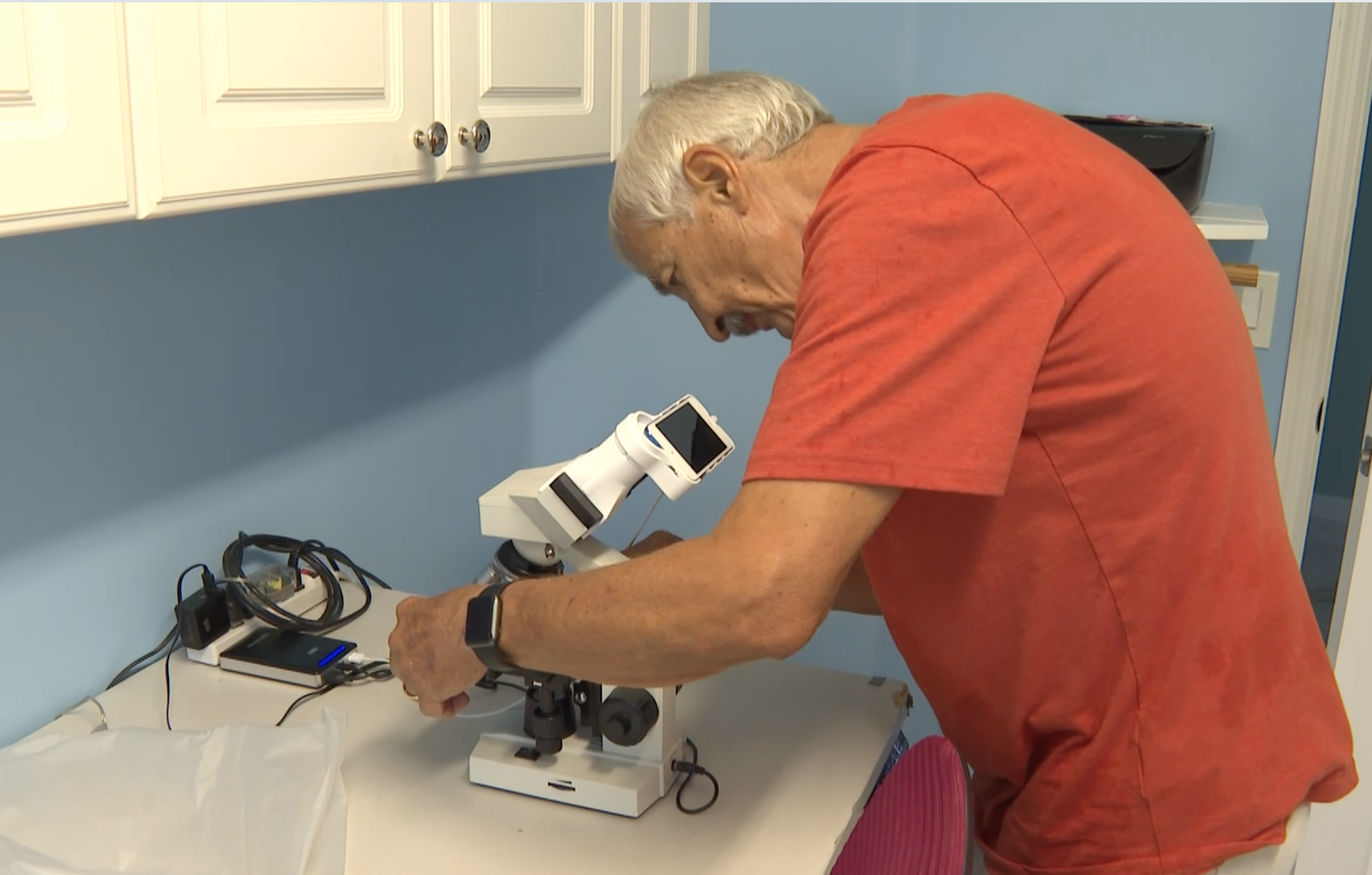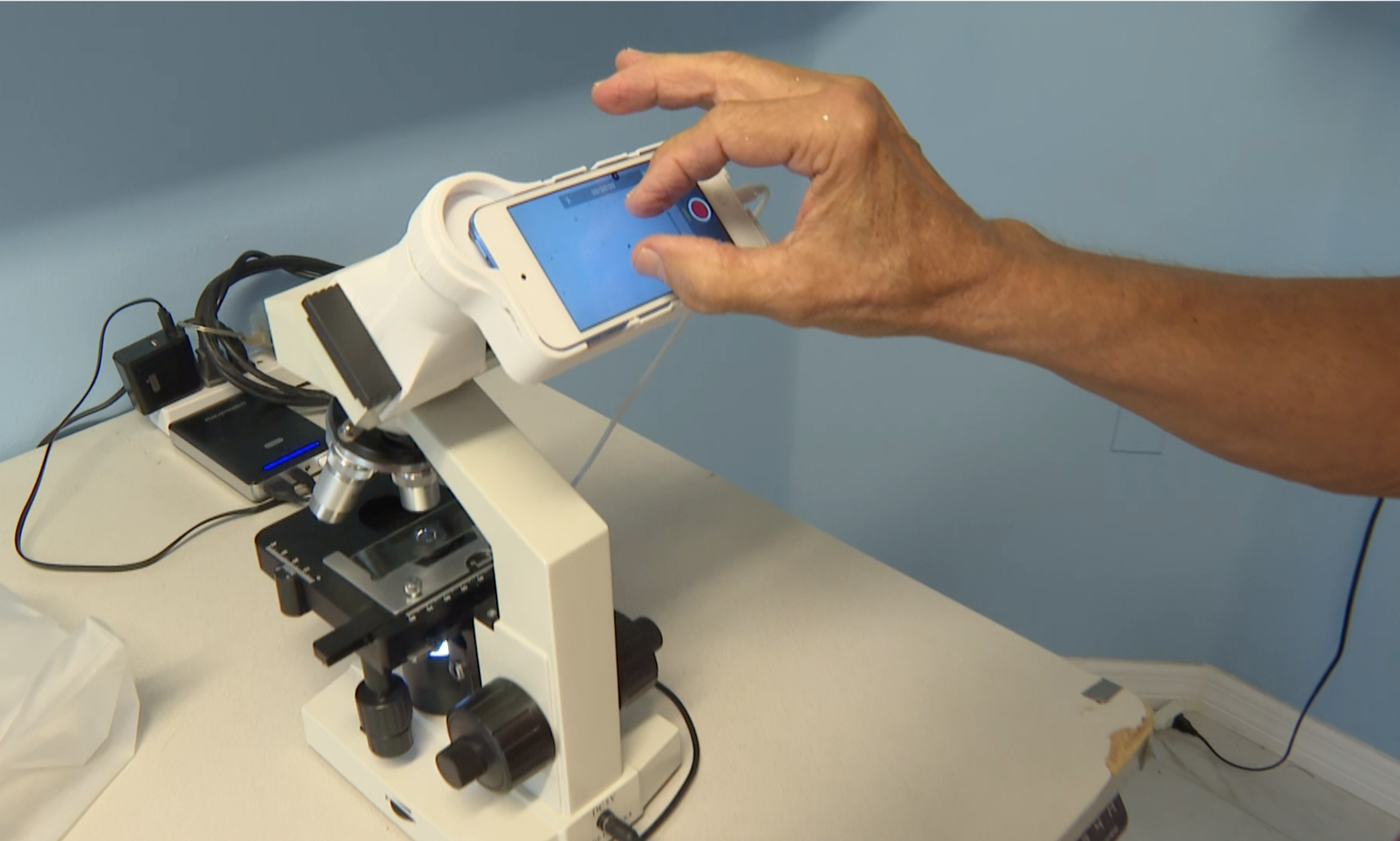Red tides in the Gulf of Mexico are caused by Karenia brevis, which has toxins that can be harmful to humans. Most people experience red tide toxins as minor respiratory irritation — coughing, sneezing, teary eyes and an itchy throat. Typically, these symptoms go away when they leave the beach.
But people with chronic lung problems like asthma and chronic obstructive pulmonary disease (COPD) can have more severe reactions when they breathe in air-borne red tide toxins — even ending up in the emergency room. Health officials advise these people to avoid areas experiencing red tide altogether, take all medications as prescribed and have access to rescue inhalers. People with chronic lung disease should leave the beach if they begin experiencing respiratory problems, even if red tide is at very low or low concentrations.
“Red tide impacts can be really variable because of wind patterns,” said Dr. Barbara Kirkpatrick, Executive Director of GCOOS and an environmental health scientist who conducted the first studies documenting the impacts of Florida red tide blooms on human health. “There are very few days when all beaches will be affected by red tide, and often your favorite beach is only affected for part of the day. The Red Tide Respiratory Forecast lets people see which beaches might be impacted by red tide and at what time of the day, allowing them to plan beach walks and other outdoor activities accordingly. They can use this tool the same way they use other weather reports.”
In 2004, NOAA-NCCOS and partners started issuing twice-weekly condition reports and bulletins that identified the risk of respiratory irritation for three-to-four-day periods on a county-by-county level. The information was then released through the National Weather Service’s regular Beach Hazard Statement alerts. Today, the Red Tide Respiratory Forecast builds on these condition reports and bulletins by providing information at a finer scale — at the beach level, not just the county level.
“We’ve been able to refine our forecasts and offer predictions on a beach-by-beach basis,” said Dr. Richard Stumpf, NOAA-NCCOS Oceanographer who led the forecast development team. “This Forecast is the first step toward reducing the health and economic impacts of red tides for coastal communities. By letting people know where and when onshore respiratory impacts are expected, red tide becomes more of an inconvenience than a crisis.”


















